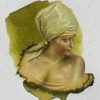Search the Community
Showing results for tags 'green-blue'.
-
TAG Kyoto – kyo-no-oto #13 seiheki TAG is a stationery shop in Kyoto (Japan) that produces some interesting soft watercolour-style inks. With the kyo-no-oto series they produce a line of inks that replicates traditional Japanese dye colours. According to available online info, t...
- 10 replies
-
- tag kyoto
- kyo-no-oto
-
(and 2 more)
Tagged with:
-

Ink Review - Pelikan Edelstein Aquamarine (Ink Of The Year 2016)
namrehsnoom posted a topic in Ink Reviews
Ink Review : Pelikan Edelstein Aquamarine (Ink of the Year 2016) Pen: Lamy All-Star Ocean Blue, M-nib Paper: Rhodia N° 16 notepad 80 gsm Review In 2011 Pelikan introduced the Edelstein series of boutique inks, available in a variety of colors: aventurine (green)jade (light green with blu...- 23 replies
-
- edelstein
- aquamarine
-
(and 1 more)
Tagged with:
-
L'Artisan Pastellier Callifolio - Ohlanga L'Artisan Pastellier is a small company in southern France that specialises in natural pigments, and offers customers authentic and reliable products in beautiful colours based on mineral or vegetable pigments. In a collaboration with Loic Rainouard from...
- 6 replies
-
- lartisan pastellier
- ohlange
-
(and 2 more)
Tagged with:
-
http://i900.photobucket.com/albums/ac209/jasonchickerson/_FUJ0621.jpg http://i900.photobucket.com/albums/ac209/jasonchickerson/_FUJ0623-3.jpg Verdigris (unadulterated) and Zebra "G" nib on Original Crown Mill Pure Cotton paper http://i900.photobucket.com/albums/ac209/jasonchickerson/01626_Phth...
- 21 replies
-
- rohrer & klingner
- verdigris
-
(and 4 more)
Tagged with:
-
http://i900.photobucket.com/albums/ac209/jasonchickerson/_FUJ0620.jpg http://i900.photobucket.com/albums/ac209/jasonchickerson/_FUJ0623.jpg #27 (unadulterated) and Zebra "G" nib on Original Crown Mill Pure Cotton Paper http://i900.photobucket.com/albums/ac209/jasonchickerson/_FUJ0623-2.jpg #...
- 3 replies
-
- teal
- green-blue
-
(and 5 more)
Tagged with:










